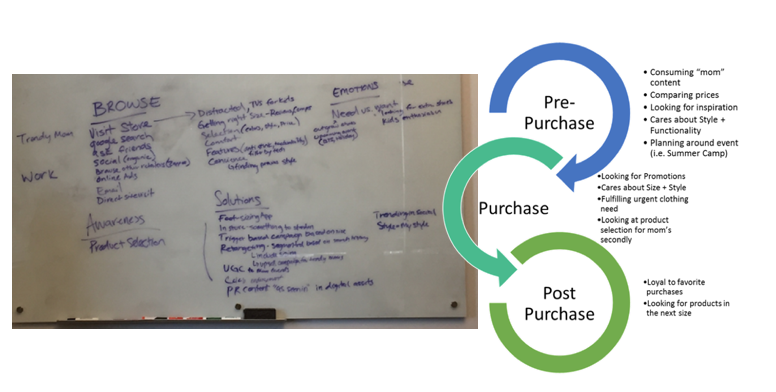
Get your FREE 30-day trial.
Please complete all fields.
Creating customer journeys has become one of the latest trends to take over the email world. The idea is that marketers can map out different messages that align to the different steps a customer takes during the purchase process.
Customer journeys allow marketers to effectively deliver on one of the key digital marketing mantras to deliver the right message, to the right audience, at the right time. In mapping out a customer journey, you will be able to apply this methodology to your marketing program.
Here are three key steps to begin planning your and bringing your customer journey to life.
To know where your customers are going to be and what they are looking for, you first need to determine who they are. Brands have a wide range of customers, but the ones we're focused on here are the loyal groups brands especially want to cater their messages. This should be based on analytics or market research about which core audiences are most important.
For Crocs, one of these key audiences is Trendy Moms. We have key insights on the types of things this audience cares about, how they purchase, and behavioral research on how this audience interacts with the brand and marketing messages.

Once we knew who our audience was, we broke down the steps of the conversion process and identified the things that were most important to our customers at each of these steps. This allowed us to focus our ideas with a customer-first mentality. We wanted to make sure any tactics we created were relevant to our target audience and were developed with our customer in mind. The process does not have to be fancy or overly scientific. Just find a place with plenty of space - we recommend whiteboards or post-it notes - to spread out your thoughts.

This is where we began to layer in tactics for how Crocs could introduce relevant messaging to our target audience in ways that we knew would be pertinent to the audience.
By first identifying who our target audience was and determining what things were important to this audience at each step in the conversion process, we were able to successfully identify campaigns that would be relevant to this audience at key times.
One of these campaigns that was created as an output of this journey-mapping session was a next size up campaign. Using our research of the Trendy Mom segment, we knew this message would be triggered to customers who bought children's shoes. Based on the size of shoe they purchased, we were able to apply logic that would trigger this message when we could determine the child was likely due for the next size up in shoes.
Why is this email reminder relevant? Given how busy moms are, and how fast kids' feet grow, anything to make the shopping experience easier is going to be a popular choice. This email reminder was relevant to this target audience based on their need for another pair of shoes, the busy lifestyle of our target audience, and our ability to recommend products in a similar product category we were making this shopping experience easier.

This targeted and highly relevant trigger has successfully driving engagement and conversions. With a 17% open rate, 3.5% click-through rate, and $.08 revenue per email send, this campaign helps solve a problem for our target audience by making the task of purchasing their kids next shoes as seamless as possible.
Building customer journeys can seem daunting, but focusing your message on key audiences and interactions will help to deliver relevant messages to your customers.
About the Author:
Lisa Graves is a Senior Relationship Marketing Strategist at DEG, a full-service digital agency based in Overland Park, Kan. that creates relevant and data-driven marketing, e-commerce, and collaboration solutions for national and global brands. With seven years of digital marketing and CRM experience, Lisa has worked with organizations like AMC, Helzberg Diamonds, Crocs, Cabela's, GoPro, Reebok, and more to optimize and efficiently scale their digital marketing programs.